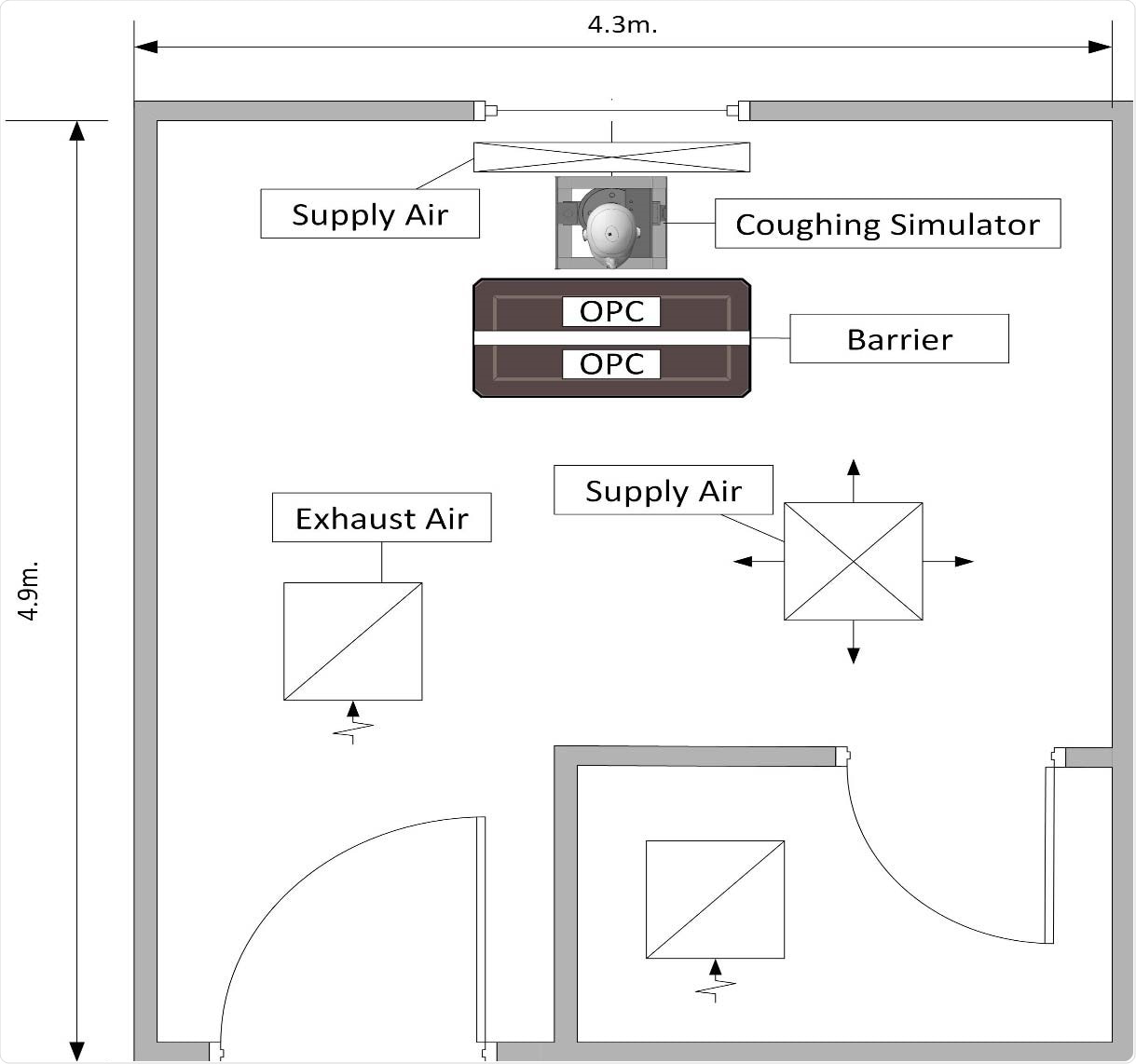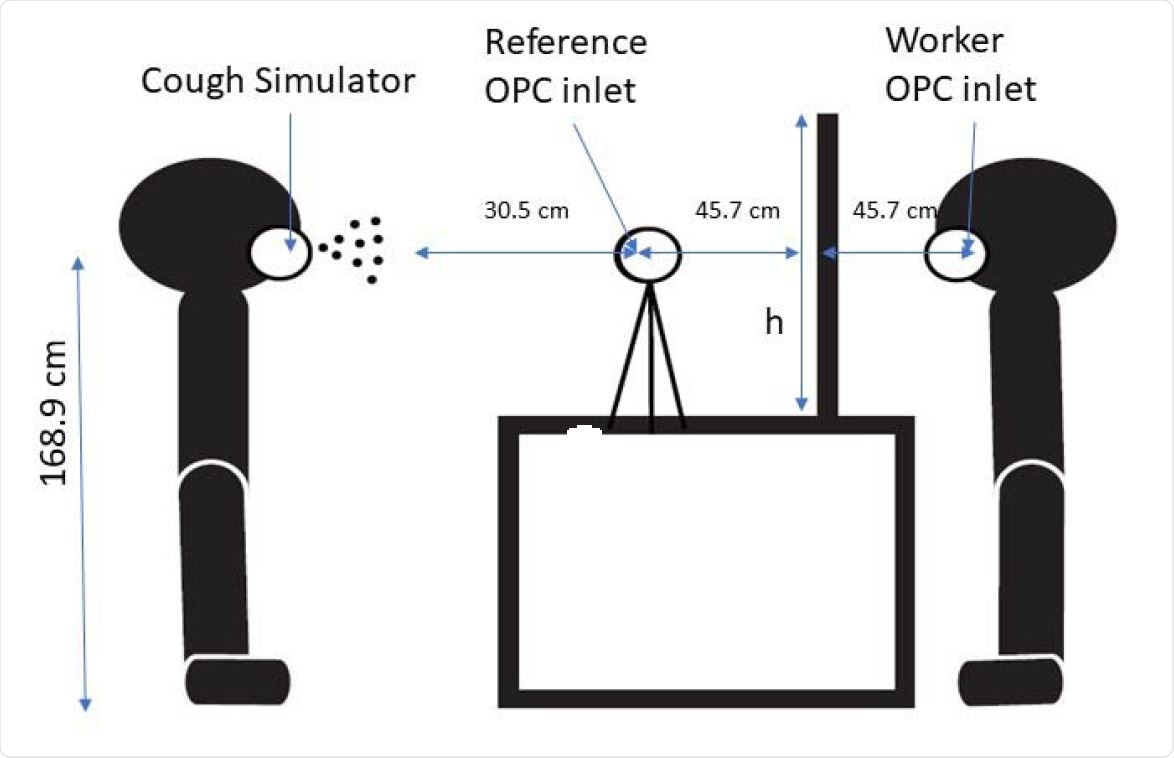Size doesn’t matter — when it comes to physical barriers in the workplace. A new Centers for Disease Control and Prevention (CDC) study found larger barriers were not statistically better than smaller physical barriers in protecting against severe acute respiratory syndrome 2 (SARS-CoV-2).
SARS-CoV-2 spreads through the air, and new variants have made the virus even more transmissible. In response, many workplaces have erected physical and transparent barriers to block viral droplets.
The researchers write:
“This laboratory simulation showed that barriers reduced particle count by at least 71% for the smallest particles when located at least 9 cm (3.5”) above cough height.”
The CDC team suggests barriers that are 9 to 39 cm above cough height and at least 91 cm wide provide the best overall protection. In contrast, breakdancer sv somatic wider barriers and barriers higher than 39 cm above a customer’s mouth do not appear to improve barrier efficiency.
The study “Laboratory Study of Physical Barrier Efficiency for Worker Protection against SARS-CoV-2 while Standing or Sitting” was published on the preprint medRxiv* server prior to peer review.

Simulation of aerosol transmission
The researchers used a cough simulator to imitate a customer’s cough. There were nine transparent barriers of different sizes made up of acrylic sheets. In addition, a cough simulation was also performed with no barrier. Each simulation occurred in three 10-minute intervals.
The heights for the nine barriers were either 61, 91, or 122 cm. Their widths ranged from 61, 91, or 122 cm. Each barrier had a rectangular opening at the bottom center to model the space for transactions. This hole was 10 cm high and 31 cm wide.

An optical particle counter was placed on each side of a barrier for summing up the total amount of particles that move around the barrier.
Each of the nine barriers and the no barrier were conducted under simulations where two people would be sitting or standing. This represented typical workstations — customers sitting while getting a manicure in a nail salon and customers standing while checking out items at a grocery store.

Since more women than men visit a nail salon, the researchers configured the cough simulation at the seated mouth height of an average woman’s height. For the standing simulation, the cough simulator was positioned at a mouth height for an average height of a man.
The model simulation did not consider people moving around, which could affect how SARS-CoV-2 droplets move around the barrier.

Barrier size efficiency while standing
Regardless of width, having a barrier where the top was at least 14 cm above the coughing mouth while standing was 71% to 86% effective against small-sized particles than having no barrier.
Barriers were 68% to 87% against moderately sized particles when they were 14 cm above cough height standing.
A tall barrier consisting of 61 cm below cough height was not more efficient than having no barrier.
Barriers above cough height at minimally 91 cm wide had a 61% efficiency in protecting against large-sized particles.
Barrier size efficiency while sitting
A barrier at all heights and widths was 83% to 93% effective against small air particles while sitting.
Barriers that are at least 9 cm above cough height while sitting were 71% to 94% effective in blocking the passage of moderately sized particles.
Barriers that were at least 91 cm were approximately 69% effective against large-sized particles while sitting.
“Most barriers that were at least 14 cm (5.5“) above cough height in the standing scenario significantly blocked the aerosols relative to no barrier. In the sitting scenario, all barrier settings with moderate size outperformed no barrier by 86 to 93%,” concluded the researchers.
*Important Notice
medRxiv publishes preliminary scientific reports that are not peer-reviewed and, therefore, should not be regarded as conclusive, guide clinical practice/health-related behavior, or treated as established information.
- Bartels J, et al. Laboratory Study of Physical Barrier Efficiency for Worker Protection against SARS-CoV-2 while Standing or Sitting. medRxiv, 2021. doi: https://doi.org/10.1101/2021.07.26.21261146, https://www.medrxiv.org/content/10.1101/2021.07.26.21261146v1
Posted in: Device / Technology News | Medical Research News | Disease/Infection News
Tags: Coronavirus Disease COVID-19, Cough, Coughing, Laboratory, Manicure, Respiratory, SARS, SARS-CoV-2, Severe Acute Respiratory, Severe Acute Respiratory Syndrome, Syndrome, Virus

Written by
Jocelyn Solis-Moreira
Jocelyn Solis-Moreira graduated with a Bachelor's in Integrative Neuroscience, where she then pursued graduate research looking at the long-term effects of adolescent binge drinking on the brain's neurochemistry in adulthood.
Source: Read Full Article
